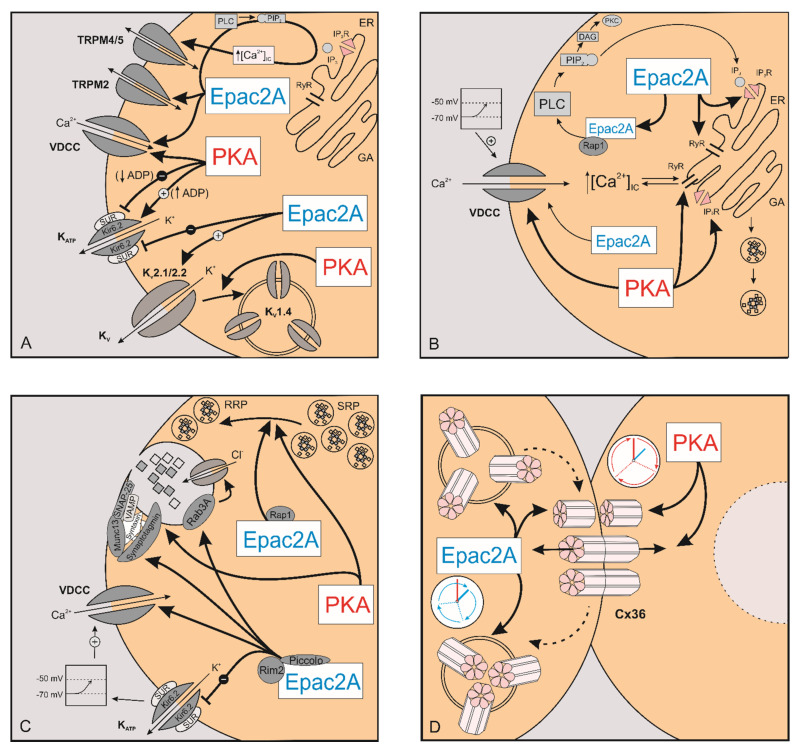Figure 2.
The role of PKA and Epac2A in stimulus–secretion and intercellular coupling. The effect of PKA and Epac2A on ion channels (A), [Ca2+]IC (B), exocytosis (C), and intercellular coupling (D). PKA—protein kinase A; Epac2A—exchange protein directly activated by cAMP; TRPM2—transient receptor potential melastatin 2; TRPM4/5—transient receptor potential melastatin 4/5; ADP—enosine diphosphate; KATP—ATP dependent potassium channel; Kir6.2—major subunit of the ATP-depedent K+ channel; SUR—sulfonylurea receptor; VDCC—voltage-dependent calcium channel; Kv—voltage-dependent potassium channels; ER—endoplasmic reticulum; PLC—phospholipase C; PIP2—phosphatidylinositol 4,5-bisphosphate; IP3—inositol trisphosphate; IP3R—inositol trisphosphate receptor, DAG—diacylglycerol; PKC—protein kinase C; GA—Golgi apparatus; K+—potassium ions; Na+—sodium ions; Ca2+—calcium ions; Cl−—chloride ions; RyR—ryanodine receptor; Cx36—connexin-36; [Ca2+]IC—intracellular calcium concentration; Rim2—Rab GTPase interacting molecule; Rpa1—Ras-related protein 1; Munc13—mammalian uncoordinated-13; VAMP—vesicle-associated membrane protein; Rab3A—Ras-related protein Rab-3A; SNAP-25—synaptosomal-associated protein 25; RRP—readily-releasable pool; SRP—slowly releasable pool.

